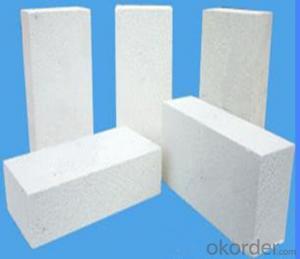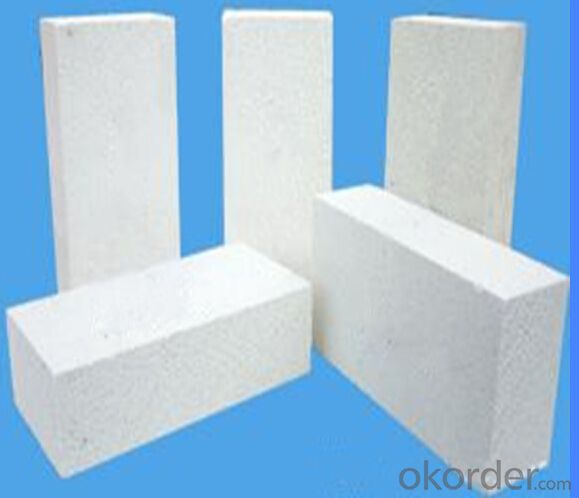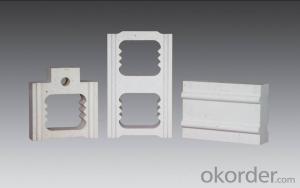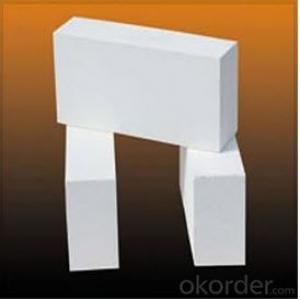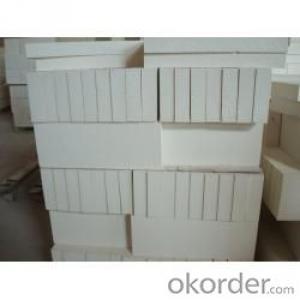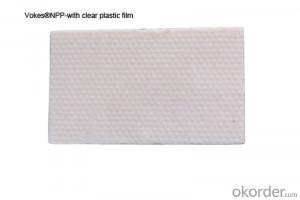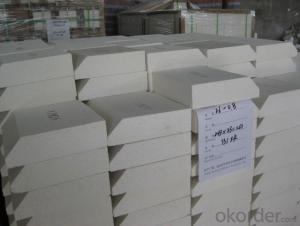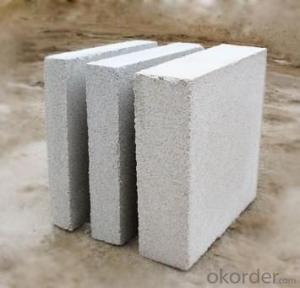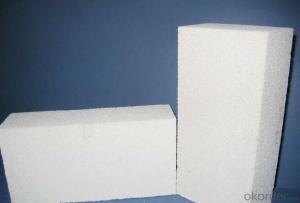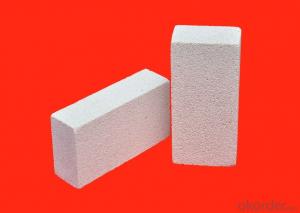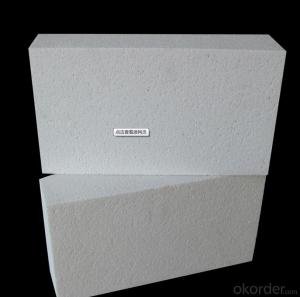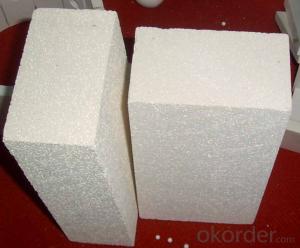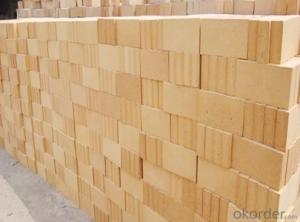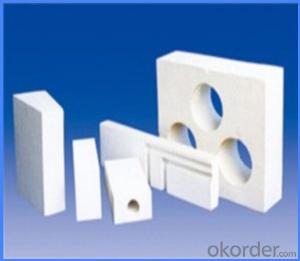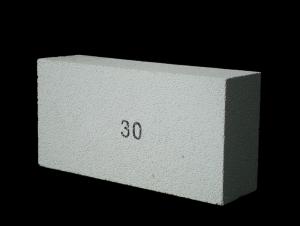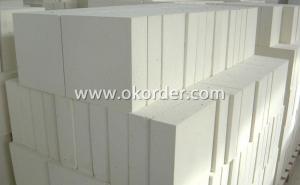Insulating Fire Brick - Refractory GJM Mullite Insulation Brick B-2
- Loading Port:
- Shanghai
- Payment Terms:
- TT OR LC
- Min Order Qty:
- 10 m.t.
- Supply Capability:
- 1000 m.t./month
OKorder Service Pledge
OKorder Financial Service
You Might Also Like
Specifications
mullite insulation brick
1. Low thermal conductivity
2.High hot compressive strength
3.Perfect Energy saving
Light weight mullite insulation furnace bricks refractory for sale
Advantage
1. Low thermal conductivity
2.High hot compressive strength
3.Perfect Energy saving
Description:
Lightweight mullite kiln bricks refractory for sale are made from good quality and superpure raw materials, with strictly classified fillings according to their grades. These fillings can form a uniform pore structure after burnt during the process of manufacture. Each grade of products has unique design to meet different thermal, physical and chomical demands.
Application:
Mullite insulation furnace bricks refractory material can be used in linings or heat-insulating materials of the industries, such as, ethylene pyrolysis furnaces, tubular furnaces, reforming furnaces of synthetic ammonia, gas generators and high-temperature shullte kilns, etc
Mullite Insulation furnace refractory material can be used as working lining, where contact with flames directly. This kind of brick can save the kiln energy very much
- Q: How do insulating fire bricks prevent heat transfer?
- Combining both their composition and structure, insulating fire bricks prevent the transfer of heat. These bricks are crafted from specialized refractory materials, such as silica, alumina, or clay, which possess high thermal resistance. Essentially, these materials have low thermal conductivity, meaning they are not easily able to conduct heat. Moreover, insulating fire bricks are often manufactured with tiny air pockets or cells within their structure. These air pockets serve as barriers for heat transfer since air is a poor conductor of heat. Consequently, when heat is applied to one side of the brick, the refractory materials' low thermal conductivity, coupled with the presence of air pockets, collaboratively minimize the amount of heat conducted through the brick. Consequently, this effectively prevents heat from transferring from one side of the brick to the other, providing insulation and reducing energy loss.
- Q: Can insulating fire bricks be used in tundish linings?
- Yes, insulating fire bricks can be used in tundish linings. Insulating fire bricks are made from lightweight refractory materials that have excellent insulating properties. Tundish linings are typically exposed to high temperatures and thermal shocks, which can lead to rapid wear and tear. By using insulating fire bricks, the tundish lining can be protected from excessive heat and thermal stresses. These bricks have low thermal conductivity, which helps to minimize heat loss and maintain a stable temperature inside the tundish. Additionally, insulating fire bricks have good mechanical strength and can withstand the mechanical stresses typically experienced in tundish operations. Overall, using insulating fire bricks in tundish linings can help to improve thermal efficiency, reduce energy consumption, and extend the service life of the tundish.
- Q: Are insulating fire bricks suitable for high-temperature kilns?
- Yes, insulating fire bricks are suitable for high-temperature kilns. Insulating fire bricks are designed to withstand high temperatures and provide excellent thermal insulation, making them ideal for use in kilns that require high operating temperatures. These bricks are made from lightweight and porous materials, such as clay or silica, which have low thermal conductivity. This allows them to effectively trap heat within the kiln and prevent heat loss, while also providing insulation against the external environment. Additionally, insulating fire bricks have good resistance to thermal shock, meaning they can withstand rapid temperature changes without cracking or breaking. Overall, insulating fire bricks are a reliable and efficient choice for high-temperature kilns.
- Q: Are insulating fire bricks suitable for the insulation of chimneys?
- Yes, insulating fire bricks are suitable for the insulation of chimneys. Insulating fire bricks are specially designed to withstand high temperatures and provide effective insulation, making them ideal for use in chimneys. They have a high thermal conductivity, which means they can retain heat and prevent it from escaping, thereby improving the efficiency of the chimney. Additionally, insulating fire bricks are resistant to thermal shock, meaning they can withstand rapid temperature changes without cracking or breaking. This is particularly important in chimneys, where the temperature can fluctuate dramatically during the combustion process. Overall, insulating fire bricks are a reliable choice for chimney insulation, as they offer excellent heat retention and durability.
- Q: Can insulating fire bricks be used in the construction of coke ovens?
- Yes, insulating fire bricks can be used in the construction of coke ovens. Insulating fire bricks are specially designed to withstand high temperatures and provide excellent thermal insulation. Coke ovens operate at extremely high temperatures, typically around 2000 degrees Fahrenheit, and require materials that can withstand these conditions. Insulating fire bricks have low thermal conductivity, which means they can effectively prevent heat transfer between the oven's interior and exterior. This helps to maintain the high temperatures required for the carbonization of coal in the coke oven, while also minimizing heat loss. Furthermore, insulating fire bricks are lightweight and have high strength, making them ideal for use in the construction of coke ovens. Their lightweight nature allows for easier installation and reduces the overall weight of the structure. Their high strength ensures that they can withstand the harsh operating conditions of the coke oven without cracking or crumbling. In summary, insulating fire bricks are a suitable choice for the construction of coke ovens due to their ability to withstand high temperatures, provide thermal insulation, and offer durability.
- Q: Can insulating fire bricks be used in reheating furnaces?
- Yes, insulating fire bricks can be used in reheating furnaces. Insulating fire bricks are designed to have excellent thermal insulation properties, which makes them ideal for use in high-temperature applications such as reheating furnaces. These bricks have low thermal conductivity, meaning they can effectively retain and reflect heat, resulting in energy savings and improved heating efficiency. Additionally, insulating fire bricks are lightweight and have good resistance to thermal shock, making them durable and suitable for the rapid temperature changes experienced in reheating furnaces. Overall, insulating fire bricks are a suitable choice for insulating and lining the walls of reheating furnaces, providing efficient heat retention and helping to maintain uniform temperatures throughout the furnace.
- Q: Are insulating fire bricks suitable for insulation in cryogenic applications?
- Insulating fire bricks are indeed appropriate for insulation in cryogenic applications. These bricks are crafted from lightweight refractory materials that possess exceptional thermal insulation qualities. With their low thermal conductivity, high melting points, and ability to withstand extremely frigid temperatures, they are perfectly suited for cryogenic applications. Cryogenic applications entail the handling and storage of materials at exceedingly low temperatures, typically below -150 degrees Celsius (-238 degrees Fahrenheit). Insulating fire bricks are specifically designed to provide efficient insulation in such extreme conditions, effectively preventing heat transfer and maintaining the desired low temperature. Moreover, insulating fire bricks exhibit chemical stability and possess excellent resistance to thermal shock. This means they can endure rapid temperature fluctuations without cracking or deteriorating, which is particularly crucial in cryogenic applications where such variations are commonplace. In addition to their exceptional thermal insulation qualities, insulating fire bricks are lightweight and easy to handle, making them convenient for installation in cryogenic systems. All in all, insulating fire bricks are a suitable choice for insulation in cryogenic applications due to their thermal insulation properties, resistance to high temperatures, chemical stability, and ability to withstand thermal shock.
- Q: Can insulating fire bricks be cut to size?
- Indeed, it is possible to alter the dimensions of insulating fire bricks. Usually composed of lightweight refractory substances like expanded clay or vermiculite, insulating fire bricks are quite manageable to cut. Saws or knives are sufficient tools for this task. It is crucial to bear in mind that precautions should be taken while cutting insulating fire bricks to ensure safety. Wearing protective goggles and a dust mask is recommended due to the potential dust and small particles generated during the cutting process. Furthermore, it is advisable to either refer to the manufacturer's instructions or seek professional guidance to guarantee the correct technique and tools are employed for cutting insulating fire bricks.
- Q: Are insulating fire bricks easy to cut and shape?
- Yes, insulating fire bricks are relatively easy to cut and shape. They are made of lightweight materials such as ceramic fibers, which can be easily cut using common tools like saws or knives. Additionally, their low-density composition allows for easier shaping and customization to fit specific requirements.
- Q: How thick should the insulation layer be when using insulating fire bricks?
- The thickness of the insulation layer when using insulating fire bricks depends on the specific application and desired level of insulation. However, a common recommendation is to have a minimum insulation layer thickness of at least 2 inches (5 centimeters) to effectively reduce heat transfer and provide adequate thermal insulation.
Send your message to us
Insulating Fire Brick - Refractory GJM Mullite Insulation Brick B-2
- Loading Port:
- Shanghai
- Payment Terms:
- TT OR LC
- Min Order Qty:
- 10 m.t.
- Supply Capability:
- 1000 m.t./month
OKorder Service Pledge
OKorder Financial Service
Similar products
Hot products
Hot Searches
Related keywords
